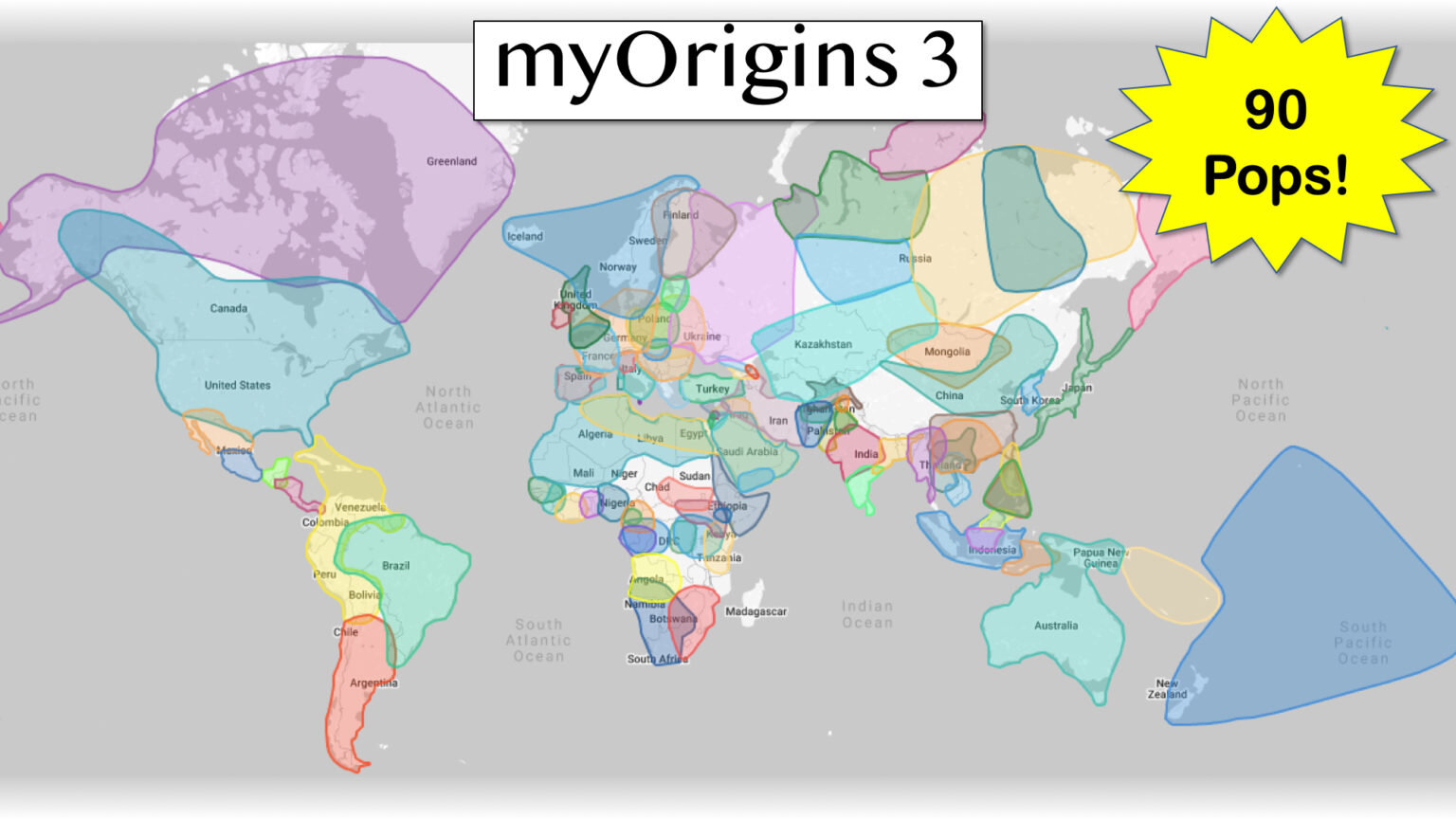Family Tree DNA has (finally!) updated its ethnicity estimates from 24 to 90 categories for its Family Finder autosomal customers. Here’s what you should know about MyOrigins 3.0.
Consumer DNA testing company Family Tree DNA (FTDNA) has been working on a major overhaul to its ethnicity estimates for two years, and it’s finally rolling out. They call it MyOrigins 3.0.
This has been a long time coming. They have upgraded from 24 reference populations to 90—over tripling the number of biogeographical subgroups to which your DNA test results may be assigned. Here’s what those 90 population groups look like on FTDNA’s new map:

Which parts of the world have significant updates to their ethnicity categories? Here’s a quick summary of continental regions with major updates (how many categories they had before and have now):
- Africa: 4 to 21
- Asia and Oceania: 6 to 33
- Americas: 2 to 9
- Europe and the Middle East: 12 to 27
FTDNA also says, “We’ve also improved the methodology behind the calculations we use to determine your results in order to make sure our ethnicity estimates are as accurate as they can be.”
Here’s What One FTDNA Ethnicity Update Looks Like
Depending on your unique genetic background, your FTDNA ethnicity results may have changed a lot—or a little. Here’s a “before and after” comparison for my dad:
Before the recent update:

His FTDNA ethnicity report now, with MyOrigins 3.0:

As you can see, the areas reported for his ethnic origins have changed somewhat. Completely gone is the Afghanistan connection. Instead, a small percentage of Baltic region appears. The Scandinavian connection remains. A new Great Britain category appears. The Central Europe region remains, but seems a little more defined.
Understanding Your FTDNA Ethnicity Updates
As you can see above by my father’s results, DNA ethnicity reports seek to connect your ancestry to various geographical regions or historical populations. Overall, our ethnicity reports are gradually getting better at this task, becoming both more accurate and more specific as more people test and more data becomes available about what DNA is associated with particular regions or groups.
If you really want to better understand the nuances of DNA ethnicity, I recommend you read our free downloadable guide to understanding your ethnicity estimates. Give it a look!

